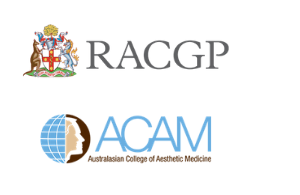🍁 Pigmentation treatment - where do I start?
/The cooler months mean less UVA and sun exposure - this is the ideal time to target pigmentation with lasers and when my laser clinicians get busy!
Like everything skin, there is no one size fits all approach. Our medical clinic has a range of devices and treatments to suit different types of pigmentation including Intense Pulse Light treatment (IPL), Q-switch laser and advanced depigmentation peels- we often combine these to get the best options and customise a plan for your skin depending on the cause of pigmentation, your skin integrity, ability to manage social downtime and your budget.
To help you get started treating pigmentation this winter, here are Dr Jemima Grant’s tips for success:
Woodslamp examination of the skin allows us to see the depth of pigmentation and diagnose dermal vs epidermal pigmentation
🔎 Tip #1: Start with a consultation.
Assessment and diagnosis is the most important determinant of a good outcome, particularly when it comes to pigmentation.
Some types of pigment will worsen with heat based treatments, or even mask a skin cancer. Diagnosing the cause of pigmentation is essential- solar or age related pigmentation has a very different treatment to hormonal pigmentation (melasma) or post inflammatory spots, and getting it wrong can mean a wasted treatment, or at worst an exacerbation of pigmentation.
For isolated or new pigmented spots, you will also need a clearance from a GP who is experienced in skin cancer checks, so make sure you see your doctor BEFORE coming to the clinic.
Tip #2 Preparation is key
Do not attempt an advanced skin treatment without adequate skin preparation.
While of course you CAN, you may end up with a bad result/poor outcome. If you’re investing time and money in a treatment, do it the right way. Skin preparation options depend on your skin colour, ethnic background and skin assessment.
Even tone correcting serum is a tyrosinase inhibitor and suitable for sensitive skin
My skin preparation regime for sun induced pigment for lighter skin types (the majority of the presentations at my seaside clinic) include:
an antioxidant in the AM followed by SPF/solar protection and
a medical grade retinol in the PM followed by an exfoliant (home peel) 1-3 x a week.
I favour the Skin Better Science range for more mature skin skin types interested in age management.
For those with sensitive skin wanting to try a retinol, start with Alpha Duo Ret from Skin better Science).
Use Cosmedix Simply Brilliant if you are breast feeding or pregnant or want a non retinol option.
Daily SPF is essential- make sure yo use something that WORKS. If you are not sure, we can check how effective your SPF is- bring it in during your consultation and we can experiment!
If you have melasma (hormonal) or have darker skin (Asian/Indian/Aboriginal skin type or parents) and you want to treat pigmentation, you will to need to use a Tyrosinase Inhibitor, a compound that helps to turn off the natural instinct of a melanocyte to make pigment in response to heat. We stock a range of doctor only Pigment Inhibitors, including Skin Better Science Even Tone Correcting Serum, Mela cream and sometimes I will compound my own to use for a short time before a treatment, or to manage hormonal pigmentation.
Using a Tyrosinase Inhibitor for 4- 6 weeks before a treatment reduces the risk of Post Inflammatory Pigmentation (PIH), a condition where insults on the skin cause dark patches. Common insults include laser procedures, heat , acne or inflammation. PIH can be a long-term issue, so as always, prevention is better than cure.
Proper skin preparation will also improve your skin recovery post treatment and improve the general health of your skin , so don’t resist it, just do it.
IPL FOR SOLAR {PIGMENTATION CAN HAVE DRAMATIC RESULTS
#Tip 3: Use the right device or peel
IPL (Intense Pulsed Light) is a light based treatment that targets superficial pigment spots. It works well for freckles and sun spots (lentigenes) in lighter skin. After treatment, the dark spots become darker and rise to the top of the skin, looking like coffee-ground spots. I usually advise 3 sessions every 4 weeks. In our clinic we may also use different lasers to "mop up" any deep spots on your 3rd treatment instead of IPL. If you are being treated with a quality IPL device , you’ll enjoy the bonus a lovely collagen “ glow”. Most of my IPL clients return yearly for one session of IPL in the cooler months, and maintain their pigmentation results with a monthly customised Thrive Signature Treatment.
Q swicth laser: If you have darker skin, or deep pigmentation, we use Q switch laser to break up pigmentation through sound waves (cool!)- this is much less likely to cause post inflammatory hyperpigmentation. Q switch laser is a slow burn treatment- it is much less dramatic than IPL, however over time it can bring about marked changes in the skin with very little downtime. You may need 6 - 10 treatments which are booked every 2-4 weeks. If you have a darker skin type, I generally prescribe a compounded cream to prepare your skin for treatments to reduce the incidence of post inflammatory pigmentation. We then maintain results with a treatment every 6 weeks or so.
Depigmentation Peels e.g For those keen to address pigmentation quickly, consider a specialised depigmentation peel such as Cosmelan or Dermamelan. These peels contain a mix of tyrosinase inhibitors and literally strip the pigmentation off the skin. There is associated downtime- I have written a few blogs about this previously make sure you read these before contemplating Cosmelan.
These are peels designed to "peel off" the pigmented skin, a bit like paint stripper. Yes, depigmentation involves downtime- 7-10 days - red, swollen, peeling skin and it’s common to have pink skin for a few weeks or months. These peels are expensive (upwards pf $1500) BUT for those willing to take the plunge /wanting a rapid depigmentation, it is worth the downtime. The cost of the peel includes 3 months of home care.
Spectra laser reduces deep and superficial pigmentation and is suitable for darker skin types
My caveat with these peels - if you want a good result, you need to be a good candidate- we always do a consultation first before treatment to determine this, as well as educate you about what the peel does and not do (hint: it does not cure your pigment woes). A good candidate is- someone with the right expectations, who is is committed to using SPF and the prescribed home care that comes with the peel. We don’t treat people who are not good candidates. Another important and under discussed issue is expectation- these peels clear a LOT of pigment, but they won’t treat it all. Deep/dermal pigment may persist. This is where the role of long term tyrosinase inhibitors and maintenance laser comes in.
I have a blog entirely dedicated to my take on these peels- please take a look!
What about Microneedling?: I do get asked about this all the time, and for aesthetic practitioners, this is a topic of debate. My take is that good microneedling (ie with a medical grade device and a clinician with experience and training) can assist superficial pigmentation. However, it can also worsen deep pigmentation, or not work at all. There are better options (as above) so I don’t use needling as a primary intervention for pigment.
Do you need to use a device to treat pigmentation? Well the answer depends on the cause of the pigmentation, your skin type and your expectations. Superficial pigmentation can sometimes respond well to home care and home peels. However, it is unlikely that all the pigmentation will go away with home care alone, which is why I generally combine an intensive treatment with home care.
ON the other hand, I do find that deep melasma - a type of pigmentation caused by metabolic/ hormonal factors- is best managed with a prescribed home care regime including oral and topical medications combined with medical grade home care and diligent use of SPF . Treatments can help, but not cure this type of pigmentation.
#Tip 4: Don’t be afraid to exfoliate
No mater what type of pigmentation you have, home peels or exfoliation needs to be part of your weekly skin care routine. Clinical treatments like lasers and peels work synergistically- clinical treatments bring the deeper pigmentation to the surface, while peels work to remove it. I incorporate a clinic grade peel treatment 2 weeks before and after IPL or laser. While I used to use only in clinic peels, I am now such a fan of the Skin Better Science Peel pads, that I am happy for patients to use this at home instead. This saves time and money.
Regular exfoliation also improve the absorption of your homecare- especially important for deep pigmentation and melasma. Note that despite the name, superficial home peel will not damage the skin, or cause ”peeling” - they often have no downtime, and leave you with a fresh glow.
#Tip 5: Get real about results.
No matter what treatment you choose to have, it’s vital to start the with a diagnosis and clear expectations of results. While solar pigmentation is well managed by IPL, melasma is rarely a simple condition to treat. Once you have a diagnosis, you will be in a better position to have realistic expectations.
An educated patient, consistent homecare regime, and long term treatment plan with your skin doctor or dermal clinician is the best way to ensure a beautiful (but not perfect!) complexion. Like everything in life, pigmentation is often a waxing and waning condition. aim for progress, not perfection.
My happiest patients are those with realistic expectations, who use good home care, who are religious with SPF and commit to a regular clinic visit.












